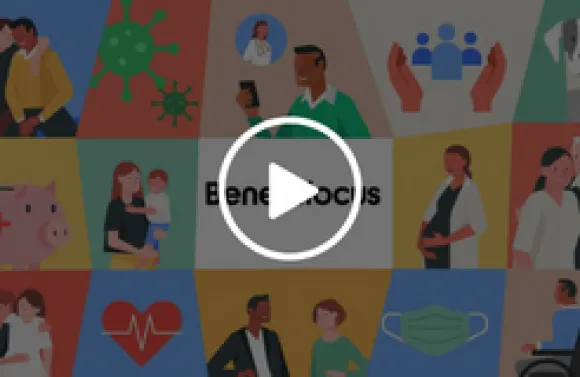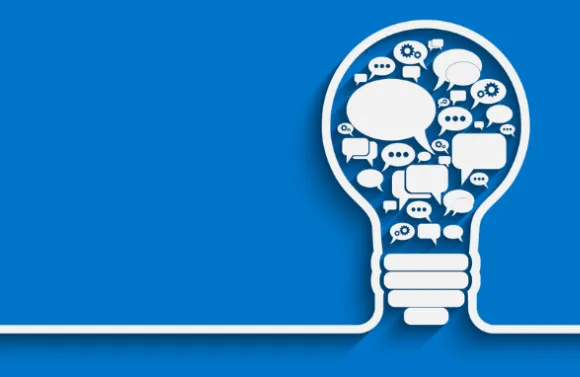
Getting employees to be fully aware of the benefits being offered to them is a common struggle for employers. At the same time, three-fourths of employees place extreme importance on employee benefits in relation to job satisfaction. This predicament may seem like a double standard for employers, but it doesn’t mean benefit professionals can’t address the challenge head on.
Benefits fairs are arguably one of the best opportunities to reach employees. The in-person interaction facilitates engagement, establishes credibility and helps showcase the big picture of your benefits program. To make the most of your next benefits fair, consider these benefits fair best practices:
1. Solicit feedback
One way to get buy-in from your employees around a benefits fair is by getting feedback directly from them through an annual survey or quick poll. Ask them what they’d ultimately like to get out of a benefits fair, the types of vendors they’d like to see and any additional ways that you could make it more useful to them.
By going straight to the source, you can cater to employees' wants and needs, ultimately making it more beneficial for them and, hopefully, driving more engagement. Plus, you can use that data later as part of communications to employees. For example, you could create an email with phrasing like, “You asked, we listened – health screenings are now a part of your benefits fair. Sign up for a time slot now!”
2. Build your team
Benefit professionals don’t have to operate in a silo. It's okay to ask for help, especially for an event like a benefits fair that requires a tremendous amount of planning and logistics. So, take the opportunity to organize a planning committee. Keep it relatively small with three to five members, but get representation from a variety of voices across your organization. You can assign specific tasks with agreed-upon timelines to help make sure the event goes off without a hitch.
Another way to gain alignment and support is by establishing a champion within your senior management team who can ultimately help you to keep open enrollment top of mind with your company's leadership, gain consensus or approval, and avoid any potential obstacles.
3. Get logistics in order and consider timing
Logistics are a big part of the planning process for benefit fairs, so proper preparation is key. Start by considering your budget and space needs. Everything from floor planning and traffic flow to vendor information will help you optimize your setup. Then, you can get down to the details of equipment needs, electrical and more.
Timing is also important to consider. Too far out from open enrollment and you risk employees forgetting what they learned. Too far into open enrollment and you risk employees having already made selections without being fully informed. Ideally, it’s best to hold your event a week or two ahead of your open enrollment period, or towards the very beginning of it if you can’t accommodate any earlier. That way, employees can get their questions answered, retain the information and still have time to consider the full picture of benefits and make the selections that are appropriate for their individual circumstances.
4. Diversify your vendors
Make sure you have representatives from vendors across your benefits program. This helps draw in a wide range of employees who may be interested in different benefit options.
Pro tip: If you want to make it even more special, hold virtual sessions where vendors can share information on their products via a digital recording. This is ideal if you have a group of remote employees or those that can’t make it to the event in person.
5. Incorporate activities like health screenings
Benefit fairs are the perfect opportunity to offer health screenings as an option for employees. Consider incorporating onsite skin cancer checks and glucose/cholesterol blood tests, as well as flu shots. Screenings can take extra time, so allow participants to pre-register for a specific time slot.
6. Brand your benefits fair and communicate
Bring your benefits fair to life with unique branding. Branding can help you give your benefits program an identity, ultimately helping you convey the value of your benefits in a way that helps employees better connect with their benefits. Plus, it makes communication fun and easier to understand. When it comes to your benefits fair, you can use that branding to your advantage with a compelling theme for your event that carries through activities and giveaways to help you draw a bigger crowd.
Then, communicate! Communication, early and often, is key to helping employees feel informed and valued. Plus, the purpose of a benefits fair is to get your employees there in the flesh, and using the right channels and frequency of communication can help you drive the greatest attendance.
7. Offer giveaways to draw a crowd
Let’s face it, some employees need a little nudge to motivate them to learn more about their benefits. One way to do that is to offer giveaways.
Vendors often bring their own fun items, but you can add to it with anything from cookbooks and yoga mats to gift cards for local wellness-related businesses. Another option is to add a grand prize, such as round-trip airline tickets, which can often be purchased using corporate credit card points. To make sure employees are engaged, consider providing a little booklet where they can get stamps for each vendor they visit. The more stamps they collect, the more likely they are to win a prize.
For more benefits fair best practices, theme ideas and timelines, check out the Benefits Fair in a Box ebook.


